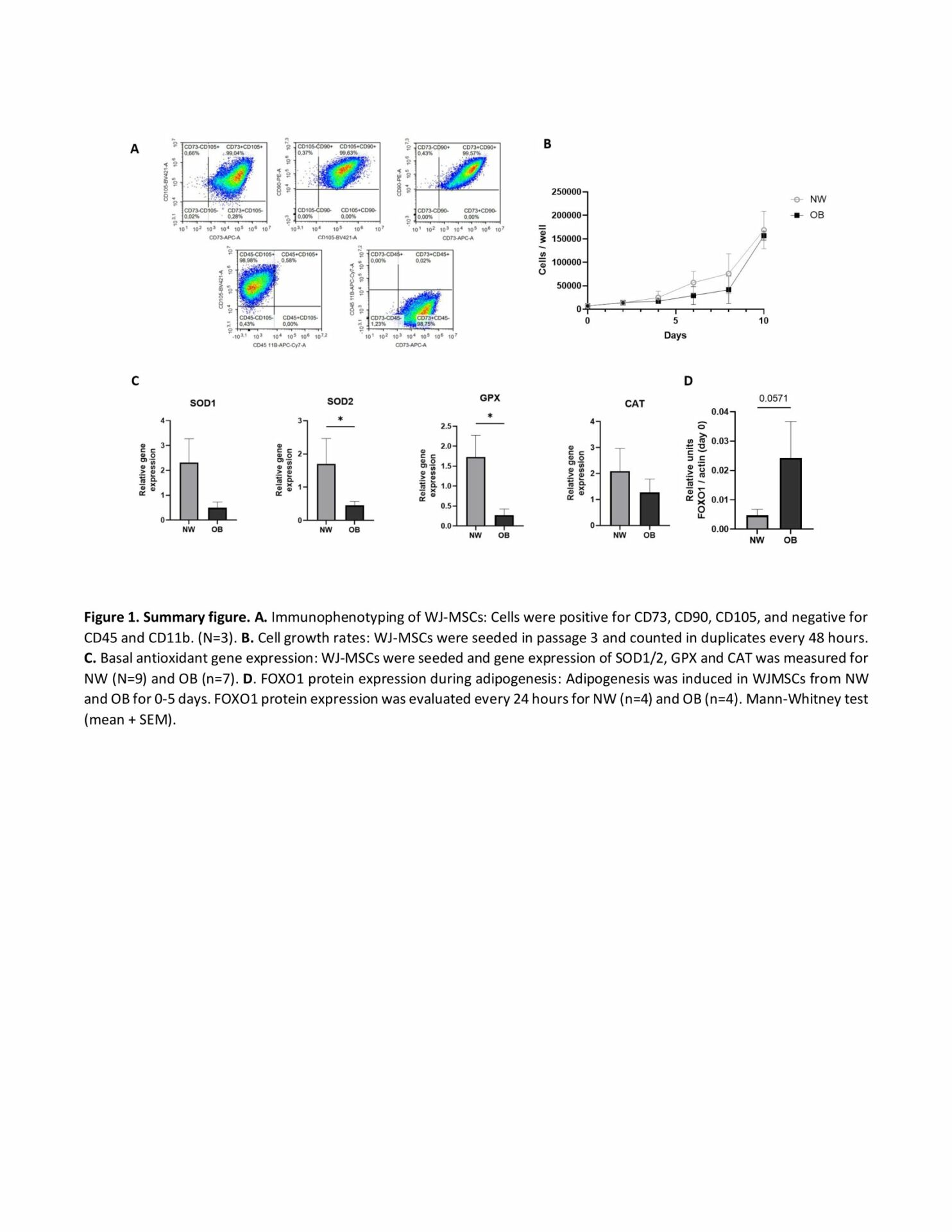Introduction: Maternal obesity is a risk factor for the development of childhood obesity. The mother’s redox state could affect the developing fetus and program the adipocyte´s metabolism. We hypothesize that the offspring´s mesenchymal stem cells (MSCs), which are adipocytes precursors, have a higher adipogenic commitment through FOXO1 activation and oxidative stress.
Objective: To characterize and study the expression of antioxidant enzymes, together with FOXO1 activation in Wharton jelly- MSCs (WJ-MSC) from the offspring of women with obesity, compared to those from normal-weight women.
Methods: Umbilical cords were obtained from UMCG maternity ward with patients’ consent (#2019.175). WJ-MSCs were isolated from newborns of normal-weight women (NW-MSC; Body Mass Index 18.5-24.5 kg/m²) and women with obesity (OB-MSC; Body Mass Index > 30 kg/m²) through the explant method. WJ-MSCs were characterized by surface markers, lineage commitment, clonogenic capacity (CFU-F) and cell growth rate. Basal and H2O2-challenged gene expression for superoxide dismutase 1/2 (SOD1/2), glutathione peroxidase (GPx1) and catalase (CAT) were quantified (qRT-PCR). FOXO1 protein expression was quantified in WJ-MSCs during induced-adipogenic commitment for 5 days (DMEM, insulin, IBMX, dexamethasone). Data was analyzed with Mann-Whitney test (mean ± SEM, n=7).
Results: Primary cultures of WJ-MSCs are a reliable source of MSC as shown by immunophenotype and differentiation assays. The OB-MSC presented a lower CFU-F and higher cell population doubling time, compared to NW-MSCs. OB-MSC presented a basal decrease in SOD1/2 and GPX gene expression (p<0.05), compared to NW-MSCs. The OB-MSC presented no response to H2O2 SOD2 gene expression, while NW-MSC responded with higher gene expression (p<0.05). OB-MSCs showed a trend to higher levels of FOXO1 protein (p=0.0571).
Conclusion: The OB-MSCs showed decreased antioxidant status, which may result in oxidative distress, compared to NW-MSC. Future studies should thus look at oxidative stress markers. During adipogenic commitment, OB-MSCs presented higher FOXO1 expression, which is a mediator for both adipogenesis and oxidative stress, suggesting that FOXO1 may be involved in the decreased antioxidant enzymes. If this altered redox regulatory activity affects the adipocyte´s metabolic function requires further studies.

